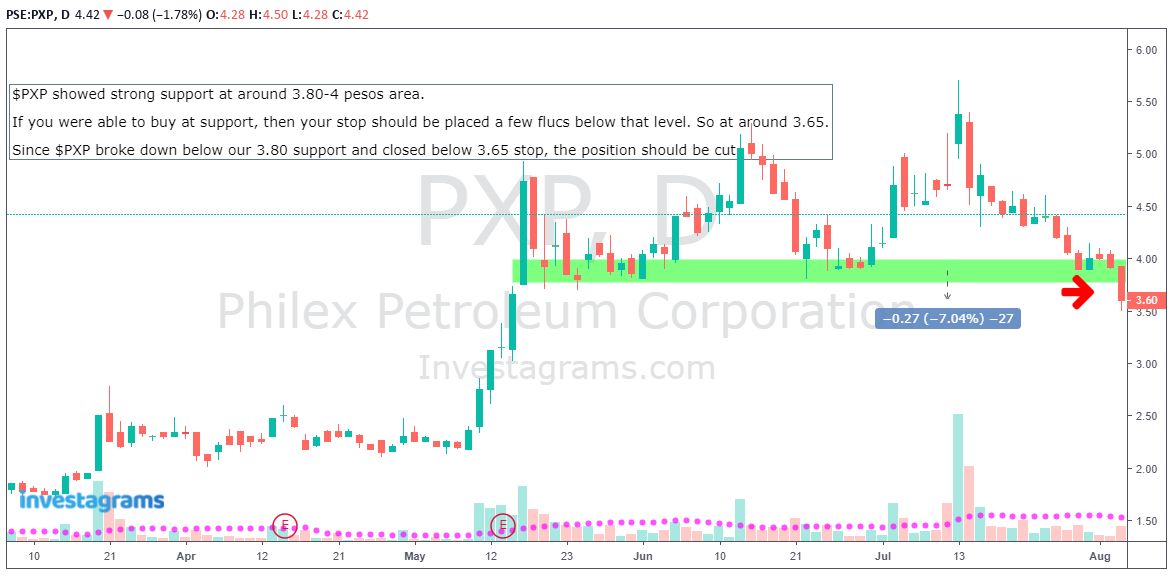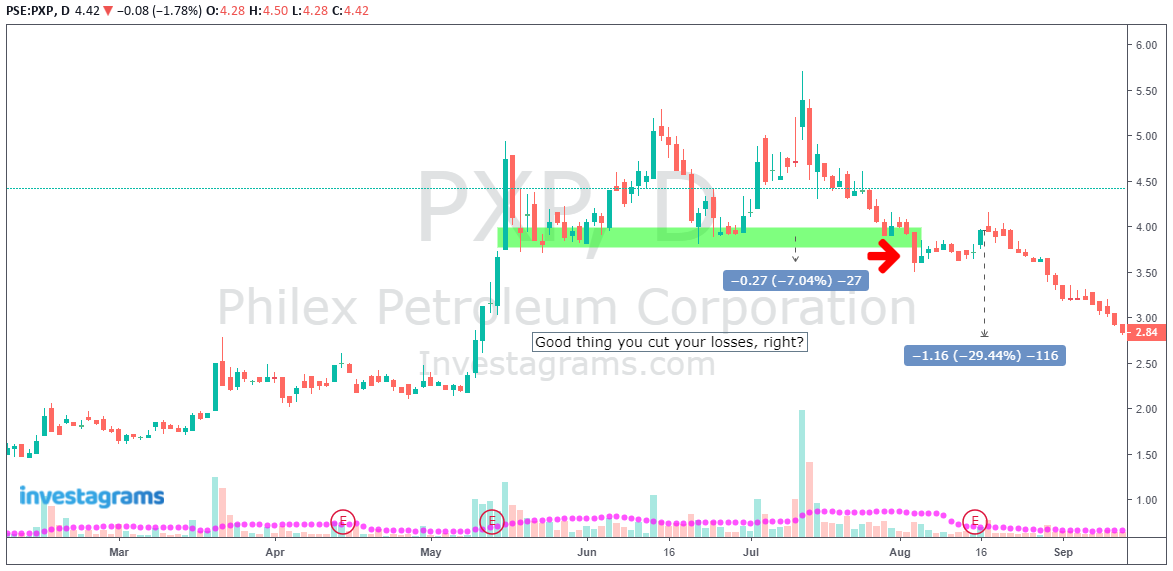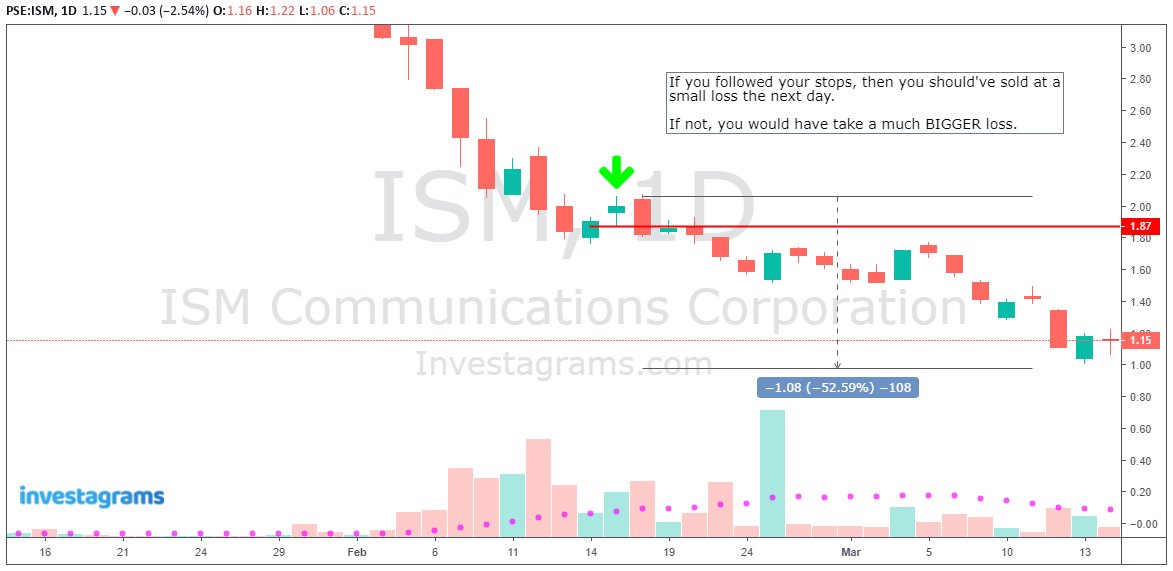In one of our previous articles, we talked about how trading or investing in any financial market isn’t all about the potential upside. There is also the potential for major financial ruin if you’re not aware of the risks involved. If you haven’t read our article on the importance of risk management, you can access it here: The Importance of Risk Management. Now let’s learn an important part of risk management – Stop loss strategies.
To keep it simple, a stop loss is basically a point in a stock’s chart where you will cut your losses with no questions asked. It’s placed at a point where the trade idea is invalidated. We’ll give some examples so you can better visualize it.
Also, it’s important for you to know that there are only a few brokers here in the Philippines that offer an automatic stop loss order. So if your broker doesn’t have this feature, you will need to manually cut your losses so it’s important to find a way to keep an eye on the market from time to time throughout the day. So now the question is, what are some basic stop loss strategies you can use?
Basic Stop Loss Strategies
Percentage Stop Loss Strategy
This basically means you’ll cut a stock that is showing a loss once it hits your chosen % threshold. William O’Neal, the author of How to Make Money in Stocks and one of the greatest investors of our time, said that his max % threshold is 7-8%. Mark Minervini also shares the same sentiment. Here are some examples:


Price Structure Based Stop Loss Strategy
Whenever you’re buying a stock you usually buy on either a bounce of support or a break of resistance. So if you bought on the bounce of support, then your stops should be a few points below the support area. Conversely, if you bought at the break of resistance, then your stop should be placed a few points below the breakout point. If you don’t know the concept of support and resistance you can check out our YouTube channel where we discuss it in depth. Here are some examples:


Previous Candle Low
This simply means you place your stop below the low of the previous candlestick. This strategy is usually done by shorter-term traders in order to cut losses in a much faster way. However, you may be prone to selling a position prematurely by only using this strategy in all scenarios. Here are some examples:


That’s about it! So always remember, having stops in place isn’t enough to ensure that your losses don’t get out of hand. What’s important is being DISCIPLINED enough to sell the stock once it hits your stop loss, NO QUESTIONS ASKED! The three strategies above are just the tip of the iceberg when it comes to setting stops effectively. Now the rest is up to you to continue studying more you can about the markets and finding ways to continuously refine both your buying and selling strategies.


